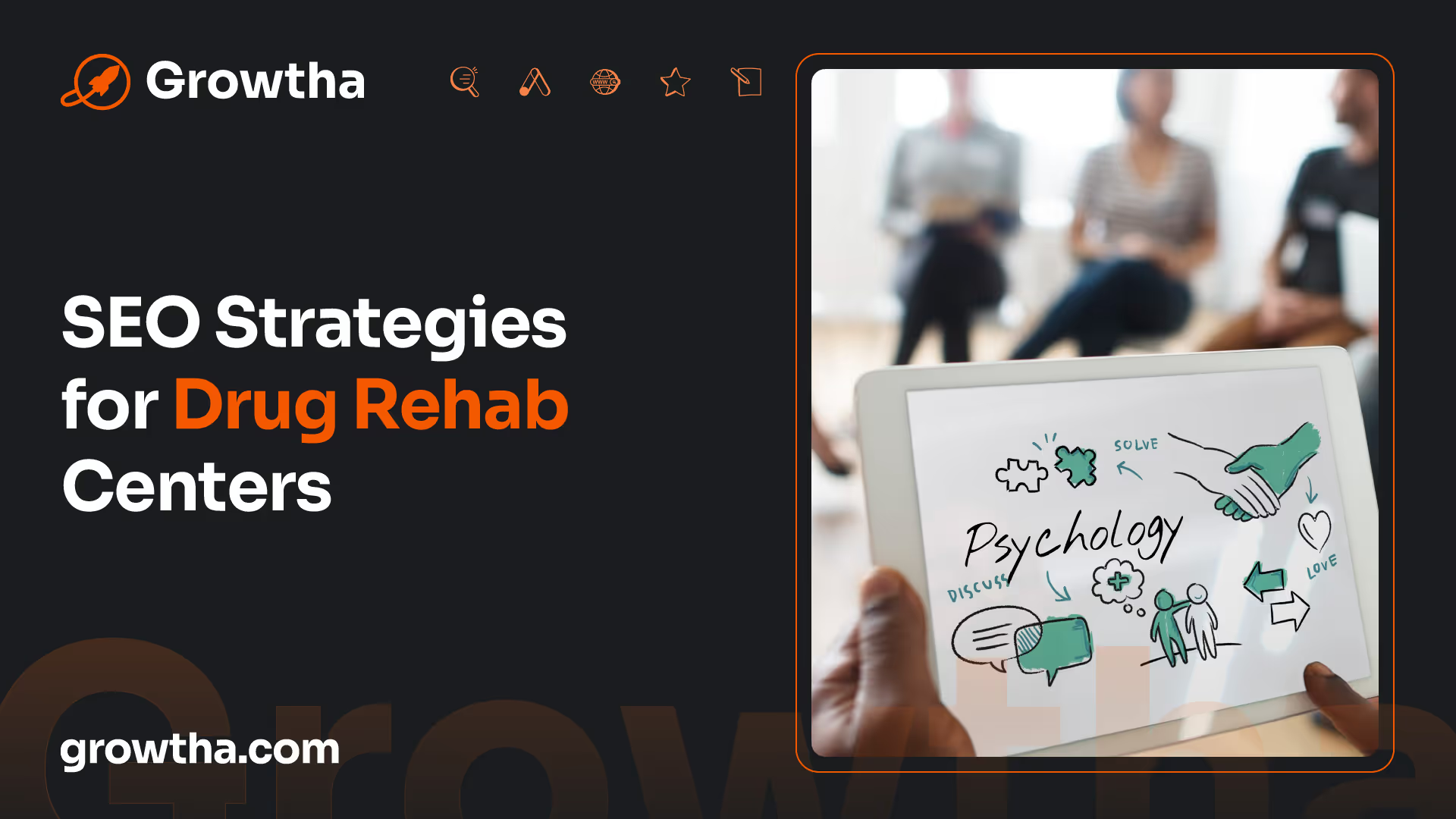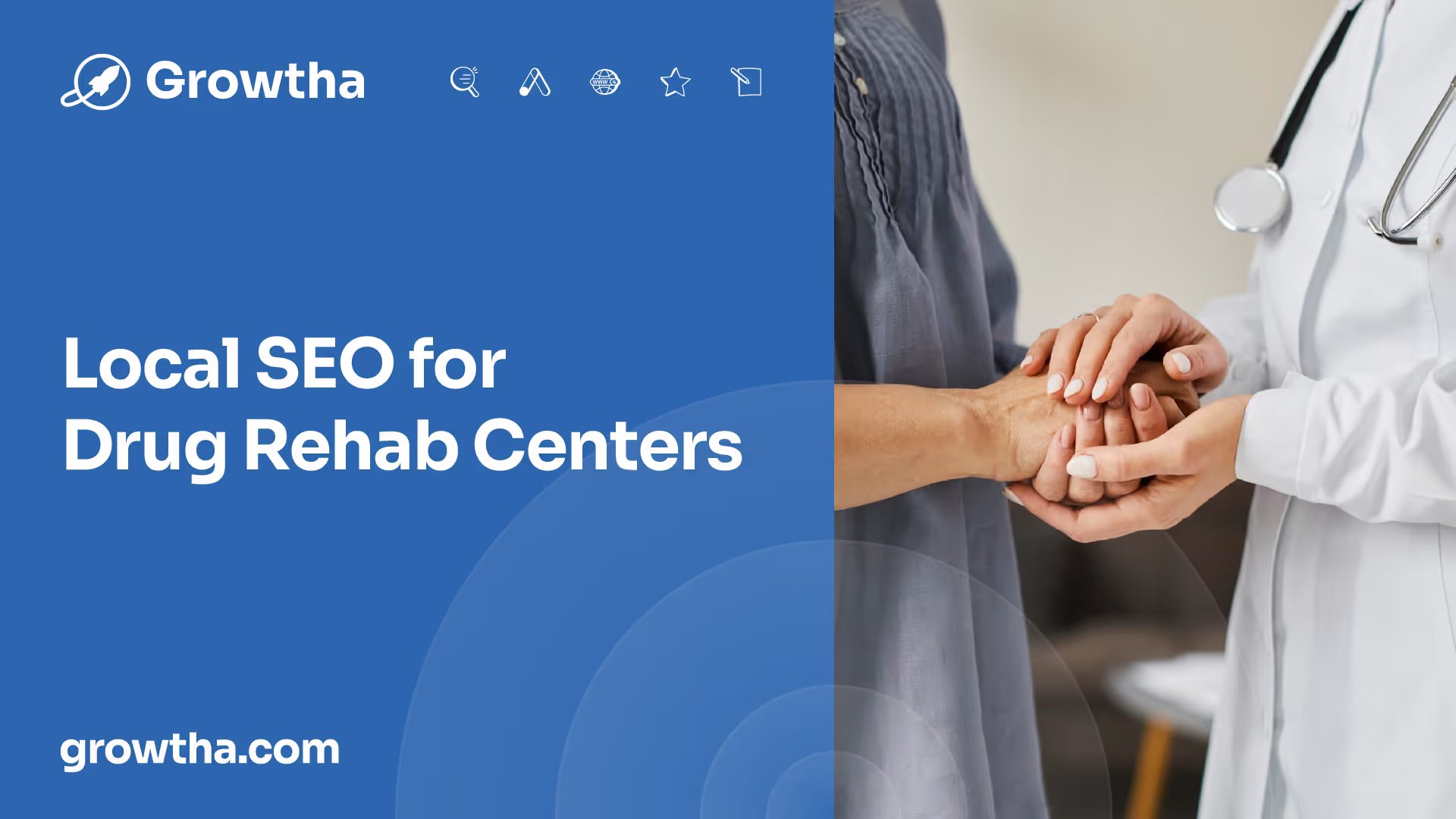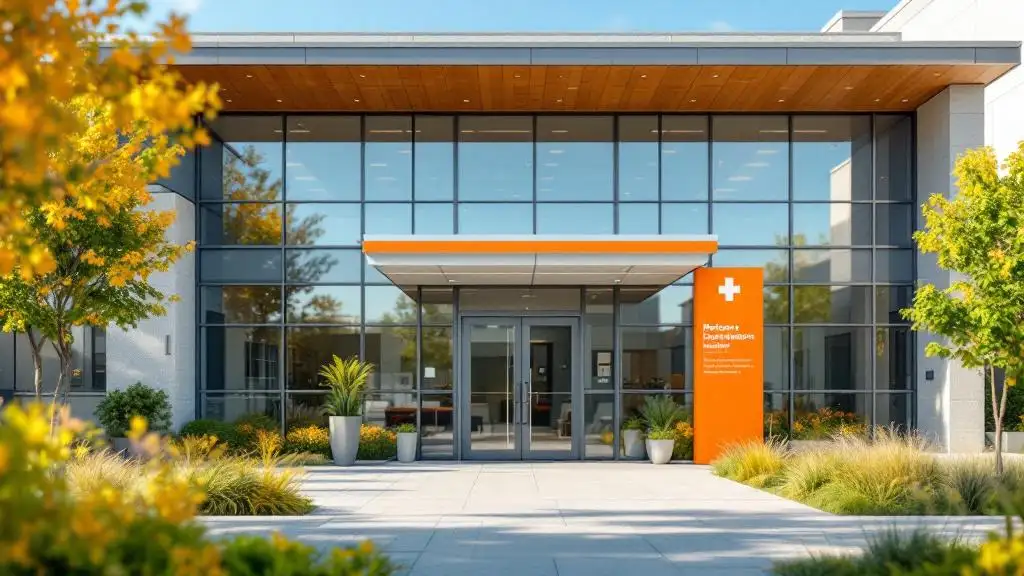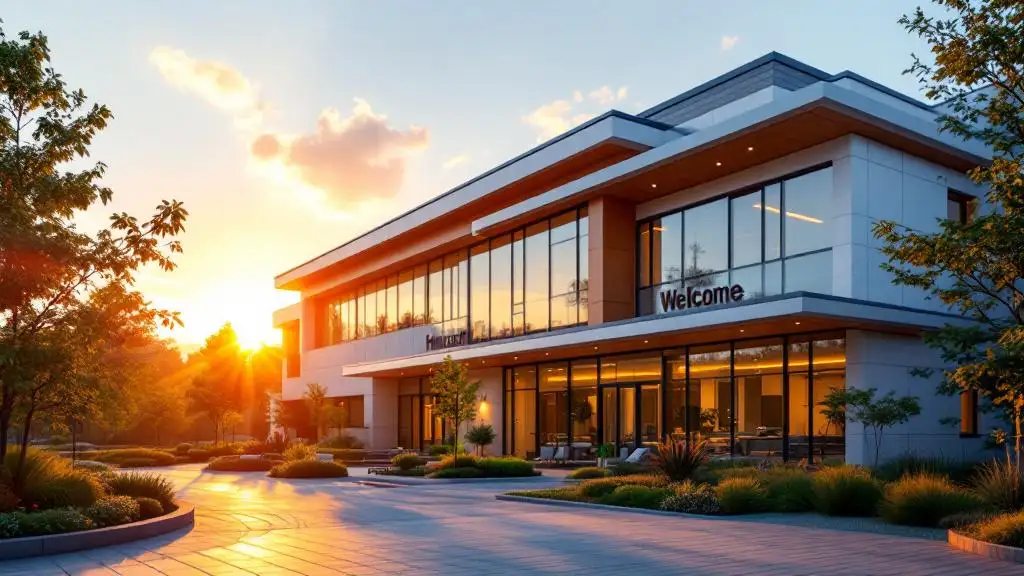Drug Rehab SEO: Ultimate Guide To Generate Admissions
In the highly competitive landscape of addiction treatment centers, drug rehab marketing plays a crucial role in promoting these facilities and connecting individuals with help.


Drug Rehab SEO: Ultimate Guide To Generate Admissions
Introduction to Drug Rehab Marketing
In the highly competitive landscape of addiction treatment centers, drug rehab marketing plays a crucial role in promoting these facilities and connecting individuals with the help they need for recovery. This section provides an overview of the importance of drug rehab marketing and the significance of understanding the target audience in this context.
The Importance of Drug Rehab Marketing
Effective drug rehab marketing is paramount for addiction treatment centers to thrive in today's competitive environment. A well-planned marketing strategy can be the difference between empty beds and a thriving facility, as it helps attract more patients and increase the visibility of the center [1].
Furthermore, drug rehab marketing serves a larger purpose beyond filling treatment beds. By connecting individuals with the necessary help and support they require for recovery, it contributes significantly to societal well-being [1]. Through strategic marketing efforts, rehab centers can effectively reach and engage their target audience, providing them with the information and resources they need to make informed decisions about their recovery journey.
Understanding the Target Audience
To develop an effective drug rehab marketing strategy, it is crucial to have a deep understanding of the target audience. The target audience in this context consists of individuals seeking addiction treatment and their loved ones. These individuals are often in a vulnerable state, searching for reliable and reputable sources of addiction treatment and support [2].
Understanding the needs, concerns, and motivations of the target audience is essential for reaching them effectively. It allows rehab centers to tailor their marketing messages, content, and approach to resonate with potential patients and their support networks. By empathizing with their struggles and providing valuable information, rehab centers can establish trust, build credibility, and position themselves as reliable resources for addiction treatment options [2].
By recognizing the importance of drug rehab marketing and understanding the target audience, addiction treatment centers can develop comprehensive strategies to effectively connect with individuals seeking help, contributing to their recovery and overall well-being. The subsequent sections will delve into specific strategies, such as SEO, local SEO, content marketing, and technical SEO, that can be employed to enhance the marketing efforts of drug rehab centers.

SEO Strategies for Drug Rehab Centers
To generate admissions and increase visibility in the highly competitive drug rehab industry, implementing effective SEO strategies is essential. By focusing on keyword research, on-page optimization techniques, and quality link building, drug rehab centers can improve their search engine rankings and attract more relevant traffic to their websites.
Keyword Research for Drug Rehab SEO
Keyword research is a crucial step in developing a successful SEO strategy for drug rehab centers. By identifying relevant keywords and phrases that potential clients are searching for, centers can optimize their website content to align with these search queries. This helps improve the chances of appearing in search engine results and attracting qualified leads.
When conducting keyword research, it's important to consider the specific services and treatments offered by the drug rehab center. Additionally, targeting keywords with location-specific modifiers can help capture individuals seeking addiction treatment services in specific geographic areas. For example, "drug rehab center in [city name]."
On-Page Optimization Techniques
On-page optimization plays a vital role in improving the visibility and relevancy of a drug rehab center's website. This involves optimizing various elements on each webpage to ensure they align with targeted keywords and improve the overall user experience.
Some key on-page optimization techniques include:
- Incorporating target keywords naturally into page titles, headings, meta descriptions, and throughout the content.
- Optimizing the URL structure to include relevant keywords and maintain a logical hierarchy.
- Using descriptive alt tags for images, making them more accessible to search engines.
- Creating unique and engaging content that provides value to visitors while incorporating targeted keywords.
By implementing these on-page optimization techniques, drug rehab centers can enhance their website's search engine visibility and attract more qualified traffic.
Quality Link Building for SEO Success
Generating quality backlinks is crucial for drug rehab SEO success. Search engines prioritize websites with strong backlink profiles, as they are seen as authoritative and trustworthy sources of information. Building high-quality backlinks can be achieved through various tactics, including:
- Creating and promoting high-quality content that attracts natural backlinks from reputable websites.
- Guest posting on relevant industry blogs and websites to establish thought leadership and gain backlinks.
- Engaging with industry influencers and building relationships that may lead to backlink opportunities.
- Participating in local community events or partnering with local organizations to gain backlinks from local sources.
By focusing on quality link building strategies, drug rehab centers can improve their website's authority, increase organic search visibility, and ultimately attract more admissions.
Implementing effective SEO strategies for drug rehab centers is crucial in today's digital landscape. By conducting thorough keyword research, optimizing on-page elements, and prioritizing quality link building, drug rehab centers can enhance their online presence, reach a wider audience, and generate more admissions.

Local SEO for Drug Rehab Centers
In today's digital age, local search engine optimization (SEO) has become a crucial strategy for drug rehab centers to connect with their communities, reach their target audience, and provide essential services in the healthcare sector. Optimizing online presence for local search can help rehab centers increase visibility, reach their target audience, build trust, and ultimately assist individuals in need on their journey to recovery [3].
The Significance of Local SEO
Embracing local SEO is not just a smart business decision for rehab centers, but also a positive contribution to the well-being of the community by providing essential services and help to those in need [3]. By implementing targeted local SEO strategies, rehab centers can significantly enhance their visibility and accessibility, making a profound difference in the lives of those seeking help in their vicinity.
Optimizing Online Presence for Local Search
To optimize their online presence for local search, drug rehab centers can take several important steps. First, it's crucial to ensure that the center's website includes relevant local keywords in its content, meta tags, and headings. This will help search engines understand the center's location and the services it offers.
Additionally, rehab centers should claim and optimize their Google My Business listing. This involves providing accurate and up-to-date information about the center, such as address, phone number, and operating hours. Including high-quality images of the facility can also enhance the listing's appeal to potential clients.
Rehab centers should also actively seek and manage online reviews from clients and their families. Positive reviews not only improve the center's reputation but also contribute to higher rankings in local search results. Encouraging satisfied clients to leave reviews and promptly addressing any negative feedback can demonstrate the center's commitment to quality care.
Geotargeting and Enhanced Engagement
Through effective geotargeting, rehabilitation facilities can ensure that their marketing efforts are not just seen but also felt by the local community. Geotargeting involves tailoring online advertising and content to specific geographic areas, allowing rehab centers to reach individuals seeking help in their vicinity [4].
To enhance engagement with the local community, rehab centers can leverage various digital marketing channels. This includes creating informative blog posts or articles that address local addiction issues, hosting webinars or virtual events, and actively participating in local community forums or social media groups. By positioning themselves as trusted sources of information and support, rehab centers can build stronger connections with potential clients and their families.
By implementing effective local SEO strategies, drug rehab centers can increase their visibility, reach their target audience, and provide vital assistance to individuals seeking help in their local communities. Through geotargeting and enhanced engagement, rehab centers can make a positive impact on the lives of those in need while establishing a strong presence in local search results.
The Power of Content Marketing for Drug Rehab Centers
Content marketing can be a powerful tool for drug rehab centers to generate admissions. By creating valuable, informative, and engaging content that resonates with the target audience, rehab centers can establish credibility and trust, ultimately increasing the likelihood of admissions.
Creating Valuable and Informative Content
One of the key aspects of content marketing for drug rehab centers is creating high-quality, relevant content that addresses the needs and concerns of individuals struggling with substance abuse. This content should provide valuable information, resources, and support to help them navigate their journey towards recovery.
For example, rehab centers can create blog articles, e-books, videos, or podcasts that cover topics such as addiction treatment methods, relapse prevention strategies, coping mechanisms, and support networks. By offering actionable advice and insights, rehab centers can position themselves as trusted authorities in the field and attract individuals seeking help and guidance.
Attracting Qualified Leads through Content
By producing informative and engaging content, drug rehab centers can attract more qualified leads. Qualified leads are individuals who are actively seeking addiction treatment and are more likely to convert into admissions.
To attract these qualified leads, rehab centers should conduct thorough keyword research to identify the search terms and queries that individuals are using when looking for addiction treatment resources. By incorporating these keywords strategically into their content, rehab centers can increase their visibility and organic search rankings, making it easier for individuals to find them when searching online.
Integrating Content Marketing with SEO
Integrating SEO best practices with content marketing efforts is essential for drug rehab centers to maximize their reach and increase admissions. By optimizing their content for search engines, rehab centers can connect with a wider audience, build brand awareness, and drive website traffic.
Some key SEO practices to consider include:
- Conducting keyword research to identify relevant and high-volume keywords related to addiction treatment.
- Optimizing on-page elements such as titles, headings, meta descriptions, and URLs to align with targeted keywords.
- Building high-quality backlinks from reputable websites to improve the authority and visibility of the rehab center's content.
- Ensuring that the website is mobile-friendly and has fast-loading pages, as these factors can impact search engine rankings.
By integrating SEO techniques into their content marketing strategy, drug rehab centers can enhance their online presence, attract more qualified leads, and ultimately increase admissions by connecting with individuals actively seeking addiction treatment resources [2].
Content marketing, when combined with effective SEO strategies, can be a powerful tool for drug rehab centers to reach their target audience, establish their expertise, and ultimately generate admissions. By providing valuable content that addresses the needs of individuals struggling with substance abuse, rehab centers can make a positive impact and help individuals on their path to recovery.
Read: Rehab Center Design Trends
Technical SEO for Drug Rehab Centers
In the realm of drug rehab SEO, technical optimization plays a crucial role in improving a website's search engine rankings. By implementing various technical SEO strategies, drug rehab centers can enhance their online presence and attract more visitors seeking addiction treatment. In this section, we will explore three key aspects of technical SEO for drug rehab centers: optimizing website structure, improving site speed and mobile-friendliness, and enhancing user experience for higher rankings.
Optimizing Website Structure
A well-optimized website structure is the foundation of successful drug rehab SEO. It ensures that search engines can easily crawl and index the site, making it more discoverable to potential visitors. Here are some key considerations for optimizing website structure:
- Use clear and descriptive URLs: Incorporate relevant keywords into the URLs to improve their visibility in search results.
- Create a logical site hierarchy: Organize the website's pages into categories and subcategories, making it easier for users and search engines to navigate.
- Implement structured data markup: By adding structured data markup, drug rehab centers can provide search engines with specific information about their services, staff, and facilities. This can enhance the website's search presence and increase organic search visibility [6].
Improving Site Speed and Mobile-Friendliness
Site speed and mobile-friendliness are critical factors in both user experience and search engine rankings. A slow-loading website can lead to high bounce rates and lower rankings. To improve site speed and mobile-friendliness:
- Optimize images: Compress images without compromising quality to reduce their file size and improve loading times.
- Enable browser caching: Utilize browser caching to store frequently accessed files, reducing the time it takes to load subsequent pages.
- Implement responsive design: Ensure that the website is mobile-friendly and adapts seamlessly to different screen sizes and devices.
Enhancing User Experience for Higher Rankings
Providing an exceptional user experience is key to achieving higher search engine rankings. When users have a positive experience on a website, they are more likely to engage with its content and stay longer. Here are some ways to enhance user experience:
- Improve website navigation: Ensure that the website's navigation is intuitive and user-friendly, making it easy for visitors to find the information they need.
- Optimize page load times: Users expect fast-loading pages, so optimize the website's performance to minimize waiting times.
- Create engaging and informative content: By offering valuable and relevant content, drug rehab centers can keep visitors engaged and encourage them to explore further.
By focusing on technical SEO, drug rehab centers can create a strong foundation for their online presence. Optimizing website structure, improving site speed and mobile-friendliness, and enhancing user experience are all essential elements of a successful drug rehab SEO strategy. Implementing these technical SEO tactics can contribute to higher search engine rankings and attract individuals seeking addiction treatment services.
References
[1]: https://sachsmarketinggroup.com/industries/health/rehab-addiction-treatment/drug-rehab-marketing/
[2]: https://medium.com/@seo-consultant/drug-rehab-seo-a7547ac64935
[3]: https://www.linkedin.com/pulse/why-local-seo-rehab-centers-important-michael-gonzalez
[4]: https://www.bivisee.com/rehab-facility-local-seo/
[5]: https://digitaldot.com/the-power-of-content-marketing-for-drug-rehab-centers/
[6]: https://www.digitalauthority.me/resources/seo-success-drug-rehab-centers/







